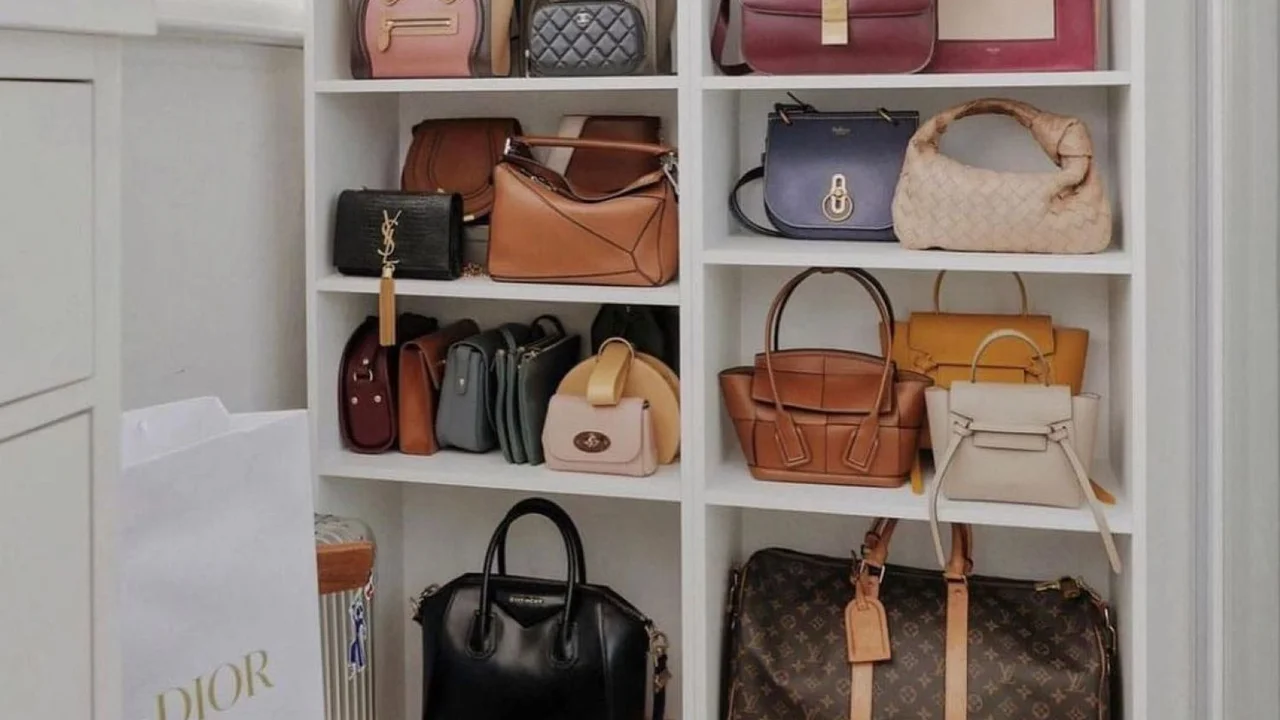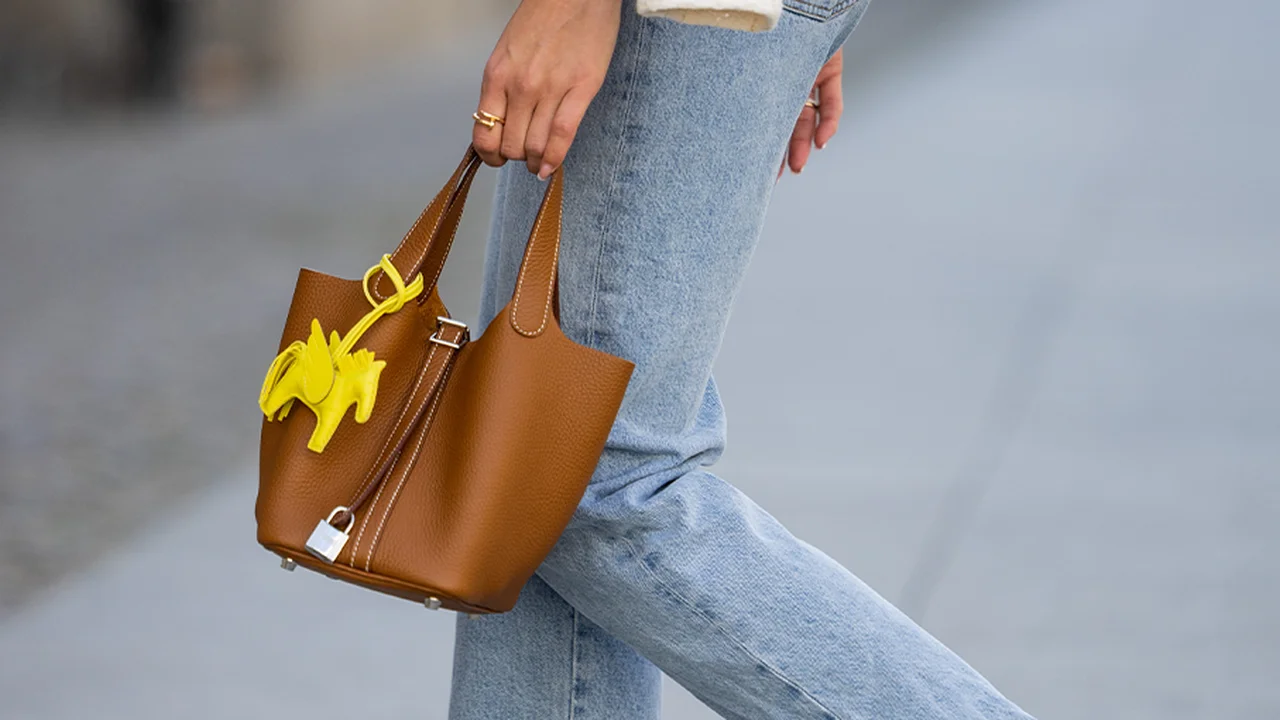Storing Handbags Properly: Preventing Damage and Wear
Storing handbags properly is crucial for preserving their beauty and extending their lifespan. This guide provides tips on how to store your handbags, preventing damage like creases, discoloration, and loss of shape. We'll also explore specific product recommendations and scenarios to help you choose the best storage solutions for your beloved bags.

Your handbags are more than just accessories; they're investments. Proper storage is key to maintaining their value and appearance. This article dives into the best practices for storing handbags, covering everything from stuffing to humidity control.
Understanding the Enemies of Handbags: Protecting Your Investment
Before diving into specific storage solutions, it's important to understand what damages handbags. Common culprits include:
- Sunlight: Fades colors and can dry out leather.
- Humidity: Promotes mold and mildew growth, especially on leather and fabric.
- Dust and Dirt: Accumulates over time and can stain or discolor materials.
- Pressure: Causes creases, dents, and loss of shape.
- Sharp Objects: Can scratch or tear delicate materials.
The Right Stuffing: Maintaining Handbag Shape and Structure
One of the simplest and most effective ways to prevent handbags from losing their shape is to stuff them properly. Here are a few options:
- Acid-Free Tissue Paper: The ideal choice. It's gentle, absorbent, and won't react with the handbag's materials.
- Bubble Wrap: A good alternative, but ensure it's clean and doesn't contain any sharp edges that could damage the lining.
- Old Sweaters or T-Shirts: Soft and bulky, but make sure they're clean and lint-free. Avoid using newspaper, as the ink can transfer.
Pro Tip: Avoid over-stuffing, as this can stretch the handbag and distort its shape. Aim for a firm but not overly tight filling.
Choosing the Right Storage Container: Dust Bags, Closet Organizers, and More
The type of storage container you choose depends on the size of your handbag collection and the amount of space you have available.
- Dust Bags: Essential for protecting handbags from dust, scratches, and sunlight. Most high-end handbags come with their own dust bags. If not, you can purchase them separately. Look for breathable materials like cotton or muslin.
- Closet Organizers: Hanging closet organizers with clear pockets are a great way to keep handbags organized and visible. They're also a good space-saving solution.
- Shelves: If you have shelf space, consider storing handbags upright with dividers to prevent them from leaning against each other.
- Storage Boxes: For long-term storage, opt for acid-free storage boxes. These will protect handbags from dust, light, and humidity.
Humidity Control: Preventing Mold and Mildew in Handbag Storage
Humidity can be a major problem, especially in warmer climates. Here are a few ways to control humidity in your handbag storage area:
- Desiccants: Silica gel packets or moisture absorbers can help to draw moisture out of the air. Replace them regularly.
- Dehumidifiers: A small dehumidifier can be used in a closet or storage room to maintain a consistent humidity level.
- Ventilation: Ensure the storage area is well-ventilated to prevent moisture from building up.
Leather Care: Keeping Your Leather Handbags Supple and Protected
Leather handbags require special care to prevent them from drying out and cracking. Here are a few tips:
- Conditioning: Apply a leather conditioner every few months to keep the leather supple and hydrated.
- Cleaning: Clean leather handbags regularly with a soft, damp cloth. Avoid using harsh chemicals or abrasive cleaners.
- Waterproofing: Consider using a leather protectant spray to protect handbags from water stains.
Fabric Handbag Care: Protecting Delicate Materials
Fabric handbags, such as those made from canvas or nylon, require different care than leather handbags.
- Spot Cleaning: Spot clean stains immediately with a mild detergent and water.
- Machine Washing: Some fabric handbags can be machine washed on a delicate cycle. Check the care label first.
- Air Drying: Always air dry fabric handbags to prevent shrinkage or damage.
Specific Product Recommendations for Handbag Storage
Here are a few specific product recommendations to help you store your handbags properly. Prices are approximate and may vary depending on the retailer.
Recommended Dust Bags for Handbag Protection
- The Container Store Cotton Dust Bags: (Approx. $5-10 each) Breathable cotton dust bags in various sizes. Great for protecting handbags from dust and scratches.
- Amazon Basics Muslin Dust Bags: (Approx. $15 for a pack of 5) Affordable and reliable muslin dust bags. A good option for everyday handbag storage.
- Luxury Dust Bags by Purse Perfector: (Approx. $20-30 each) High-quality dust bags made from premium materials. Ideal for protecting expensive handbags.
Recommended Closet Organizers for Handbag Storage
- Whitmor Hanging Purse Organizer: (Approx. $20) A hanging closet organizer with clear pockets. Allows you to easily see and access your handbags.
- MISSLO Purse Handbag Organizer: (Approx. $25) A larger hanging organizer with multiple compartments. Suitable for storing a variety of handbag sizes.
- Household Essentials Shelf Divider: (Approx. $15 for a set of 2) Use these on shelves to keep handbags upright and organized.
Recommended Leather Care Products
- Leather Honey Leather Conditioner: (Approx. $20) A popular and effective leather conditioner. Helps to keep leather supple and prevents cracking.
- Apple Brand Leather Care Set: (Approx. $30) Includes a leather cleaner and conditioner. A good option for maintaining the appearance of your leather handbags.
- Bickmore Gard-More Water & Stain Repellent: (Approx. $15) A water and stain repellent spray for leather handbags. Helps to protect against water damage and stains.
Using Handbags in Different Scenarios: From Everyday Use to Travel
The way you use your handbag also affects its longevity. Here are a few tips for different scenarios:
- Everyday Use: Avoid overfilling your handbag, as this can stretch the straps and damage the shape. Clean it regularly to remove dirt and grime.
- Travel: Pack your handbag in a dust bag inside your suitcase. Stuff it with soft items to prevent it from being crushed.
- Special Occasions: Store your special occasion handbags in a safe place where they won't be damaged or scratched.
Comparing Different Handbag Storage Methods: Which is Right for You?
Choosing the right handbag storage method depends on your individual needs and preferences. Here's a comparison of the different options:
| Method | Pros | Cons | Best For |
|---|---|---|---|
| Dust Bags | Protects from dust and scratches, affordable | Doesn't protect from pressure or humidity | Everyday storage, protecting individual handbags |
| Closet Organizers | Organized, visible, space-saving | Can take up closet space, not ideal for long-term storage | Organizing a large collection, maximizing closet space |
| Shelves | Easy access, can display handbags | Requires shelf space, doesn't protect from dust | Displaying handbags, easy access |
| Storage Boxes | Protects from dust, light, and humidity, ideal for long-term storage | Can be bulky, handbags not visible | Long-term storage, protecting valuable handbags |
The Cost of Handbag Storage: Investing in Your Investment
The cost of handbag storage can vary depending on the products you choose. Dust bags are relatively inexpensive, while closet organizers and storage boxes can be more expensive. Consider the value of your handbags and invest in storage solutions that will protect them properly. Investing in good storage supplies will save you money in the long run by preventing damage and extending the life of your handbags.
:max_bytes(150000):strip_icc()/277019-baked-pork-chops-with-cream-of-mushroom-soup-DDMFS-beauty-4x3-BG-7505-5762b731cf30447d9cbbbbbf387beafa.jpg)





